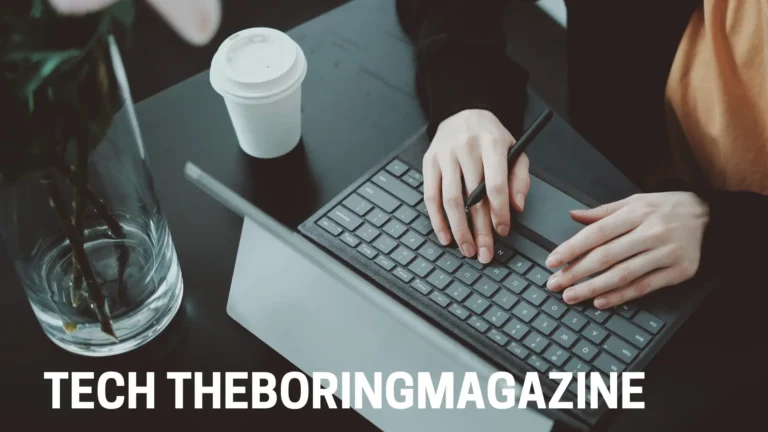
InfluencersGoneWils Understanding the New Frontier of Social Media Influence and Controversy
The digital age has radically transformed the way people interact with media, brands, and culture. At the forefront of this transformation is the rise of social media influencers—individuals who have amassed significant online followings through platforms like Instagram, YouTube, TikTok, and Twitter. These influencers have become modern celebrities, shaping trends, sparking social conversations, and even driving consumer habits. However, there has emerged a new and highly controversial trend known as #InfluencersGoneWils.
The hashtag #InfluencersGoneWild has become synonymous with a new breed of influencers who embrace extreme behavior, pushing the boundaries of what is considered socially acceptable, responsible, or ethical. From shocking stunts to inappropriate content, the #InfluencersGoneWild phenomenon represents the convergence of fame, social media algorithms, and the ever-present desire for viral attention. But what does this trend mean for the influencers themselves, their followers, and society at large? What are the ethical and social implications of influencers who choose to embrace this new, provocative form of content?
This article seeks to delve deep into the world of #InfluencersGoneWils, exploring how this movement emerged, its impact on culture, the ethical dilemmas it presents, and the role social media platforms play in either enabling or curbing this increasingly wild form of content.
The Rise of the Social Media Influencer
Before diving into the specifics of #InfluencersGoneWild, it’s essential to understand the influencer phenomenon in a broader context. Influencers are individuals who have gained fame and recognition primarily through their social media platforms. By curating content that resonates with their followers, influencers are able to monetize their popularity through brand partnerships, sponsored posts, and affiliate marketing.
The influencer industry has exploded over the past decade. Platforms like Instagram, TikTok, and YouTube offer a space for individuals to carve out niches, build a personal brand, and engage with a global audience. Influencers range from beauty gurus and fitness experts to food bloggers and travel vloggers. While some influencers may share lighthearted, entertaining content, others adopt a more serious or advocacy-driven approach, discussing topics like mental health, body positivity, and social justice.
However, the path to success as an influencer has become increasingly competitive. With millions of influencers vying for attention in a saturated market, the pressure to maintain relevance has led some to take more extreme measures to stay visible. This is where the phenomenon of #InfluencersGoneWild comes into play.
What is #InfluencersGoneWils?

At its core, #InfluencersGoneWils refers to a trend where influencers engage in behavior that is deliberately shocking, controversial, or extreme in nature, often with the intent of going viral. These influencers use their platform to push boundaries, break taboos, or create moments that will generate buzz. The hashtag is often associated with influencers who engage in reckless stunts, controversial commentary, or inappropriate behavior to gain the attention of their followers and the broader media.
Influencers adopting the #InfluencersGoneWild persona might post content that pushes the limits of what’s considered acceptable on social media. They may participate in dangerous challenges, post risqué photos or videos, share exaggerated or fabricated personal stories, or even make offensive jokes. The goal is not only to entertain but also to provoke, elicit strong reactions, and generate as much engagement as possible.
In some cases, this behavior is a conscious decision to make a statement or challenge societal norms. In others, it’s a calculated effort to stand out in a crowded digital space. Regardless of the intent, the overarching theme is the willingness to go to extremes in the pursuit of fame and virality.
The Impact of #InfluencersGoneWils on Social Media Culture
The #InfluencersGoneWils trend represents a fundamental shift in how influencers approach their content and audiences. This shift can be seen as both a reflection of and a contributor to the broader dynamics of social media culture.
The Race for Attention and Virality
One of the defining characteristics of social media platforms is the emphasis on engagement. Likes, comments, shares, and views are the currency by which influencers are judged. Social media algorithms prioritize content that garners strong emotional reactions—whether positive or negative. As a result, influencers are incentivized to create content that provokes strong emotions, captures attention, and goes viral. This has led to a rise in increasingly provocative and sensational content.
In this context, the #InfluencersGoneWils phenomenon is a direct response to this hyper-competitive environment. The more shocking or wild the content, the more likely it is to get noticed, shared, and commented on. Influencers may go to extreme lengths to ensure their content stands out from the sea of other posts on their followers’ feeds. Whether it’s by performing a dangerous stunt, making bold statements, or crossing social boundaries, these influencers understand that in the digital world, attention is power.
Challenging Social Norms and Breaking Taboos
Another aspect of the #InfluencersGoneWils trend is the willingness to challenge social norms and break taboos. Influencers participating in this movement often push the boundaries of what is considered acceptable, questioning the rules of behavior, fashion, and even morality. Whether they’re showcasing nontraditional beauty standards, engaging in controversial social commentary, or mocking cultural norms, these influencers use their platforms as spaces for radical self-expression.
By rejecting conventional expectations, influencers embracing the #InfluencersGoneWild label can inspire followers to question traditional ideas about beauty, identity, and behavior. However, while some see this as empowering, others view it as irresponsible or dangerous. The line between self-expression and recklessness is often blurred, leading to heated debates about the role of influencers in shaping public attitudes and behaviors.
Ethical Dilemmas and Criticisms of the Movement

While the #InfluencersGoneWild movement may have its advocates, it has also faced significant ethical criticism. Many detractors argue that influencers who engage in wild, extreme content are engaging in reckless behavior that can have harmful consequences for both themselves and their audiences.
Exploitation of Followers
One of the major ethical concerns surrounding influencers who adopt the #InfluencersGoneWild persona is the potential exploitation of their followers. Many influencers, particularly those with large and impressionable audiences, have a significant amount of power over their followers’ beliefs and behaviors. By engaging in extreme behavior for shock value, these influencers may inadvertently encourage their audience to emulate their actions, often without considering the consequences.
For example, influencers who post videos of themselves performing dangerous stunts or endorsing risky behaviors may inadvertently inspire young followers to do the same. This becomes particularly concerning when influencers promote behaviors that are not only reckless but also harmful or unhealthy, such as dangerous dieting practices, substance abuse, or unsafe physical challenges.
False Representation and Fabricated Content
Another ethical dilemma associated with #InfluencersGoneWils is the potential for influencers to fabricate or exaggerate aspects of their lives for the sake of drama or controversy. In the quest for virality, influencers may share exaggerated personal stories, create fake narratives, or post misleading images to capture attention.This raises significant questions about the authenticity of influencer content. In a digital world where influencers are often seen as relatable, accessible figures, the line between reality and fiction becomes increasingly blurred. For followers who look up to influencers and view them as role models, discovering that their favorite influencer has engaged in deceptive behavior can lead to a loss of trust and credibility.
The Danger of Perpetuating Harmful Stereotypes
The #InfluencersGoneWils trend also raises concerns about the perpetuation of harmful stereotypes. Some influencers, in an effort to gain attention, may perpetuate offensive jokes, stereotypes, or discriminatory behavior that reinforces societal prejudices. This can contribute to a culture of intolerance, exclusion, and harm.
For example, influencers who mock marginalized communities or make light of serious social issues may inadvertently encourage others to adopt similar attitudes. Given the power of social media to shape perceptions and influence behavior, this type of content can have far-reaching consequences, particularly when it’s consumed by young or impressionable audiences.
The Role of Social Media Platforms

Social media platforms themselves are not innocent bystanders in this dynamic. In fact, they play a crucial role in either enabling or curbing the #InfluencersGoneWild phenomenon. Platforms like Instagram, YouTube, and TikTok have built algorithms designed to amplify content that garners high engagement. This has created an environment where influencers are encouraged to produce content that is increasingly extreme or sensational.
While platforms have taken steps to regulate harmful content—such as banning hate speech, enforcing age restrictions, or removing dangerous content—they often face criticism for being slow to address more subtle forms of exploitation or irresponsibility. In many cases, platforms are reluctant to impose strict rules for fear of alienating influential creators who drive traffic to the site.
There is a growing debate about whether social media platforms have a responsibility to protect their users from harmful content while still allowing for creative freedom and self-expression. Striking the right balance between regulation and freedom is one of the central challenges facing the influencer industry today.
The Future of #InfluencersGoneWild
As social media continues to evolve, the future of the #InfluencersGoneWils trend remains uncertain. Will influencers continue to embrace increasingly extreme behavior, or will the public begin to grow tired of such antics? Will social media platforms implement more stringent regulations to prevent harmful content from going viral? And, perhaps most importantly, will audiences begin to demand more responsibility and authenticity from the influencers they follow?
The answers to these questions will depend on a variety of factors, including shifts in audience attitudes, changes in platform policies, and the broader cultural conversation about the role of social media influencers. What is clear, however, is that the #InfluencersGoneWild trend is a reflection of the larger issues at play in the digital age—issues related to fame, attention, ethics, and responsibility.
Conclusion
The #InfluencersGoneWils movement is a phenomenon that reflects both the opportunities and pitfalls of the influencer economy. While it has sparked conversations about creativity, social norms, and personal expression, it has also raised important ethical questions about the responsibilities of influencers and the platforms that host their content. As the influencer industry continues to grow, it will be crucial for both creators and audiences to carefully consider the impact of extreme, viral content on society.
Ultimately, the future of influencer culture will depend on how influencers, platforms, and audiences navigate the fine line between entertainment and responsibility. As #InfluencersGoneWild continues to evolve, it serves as a powerful reminder of the complexity of digital fame and the consequences of pushing boundaries in pursuit of viral success.



